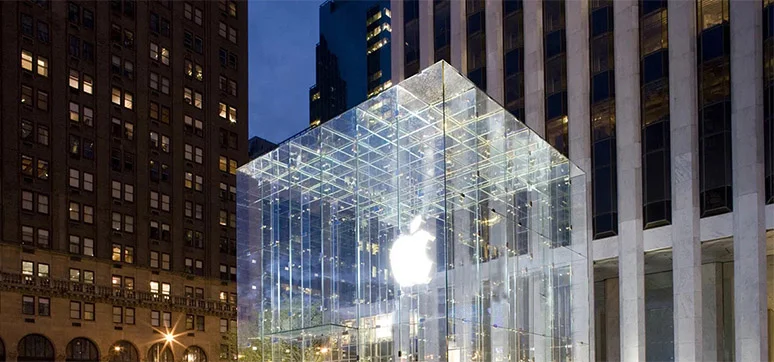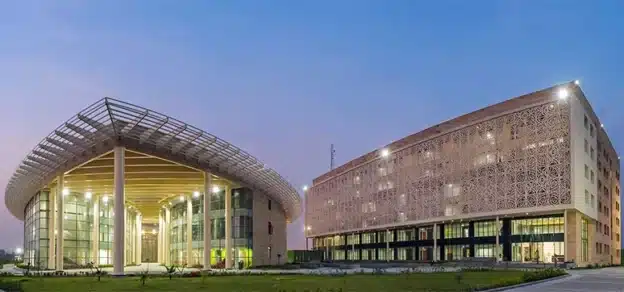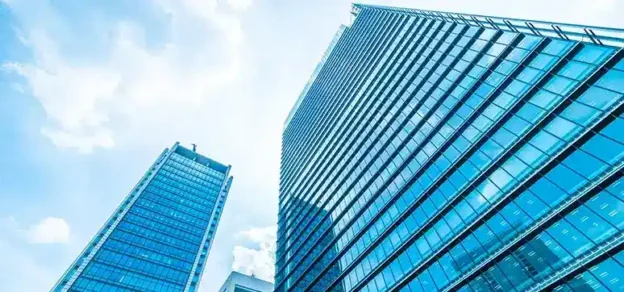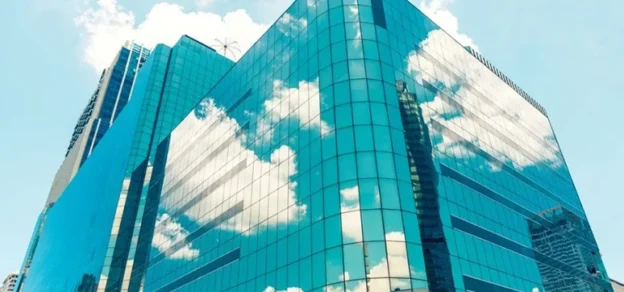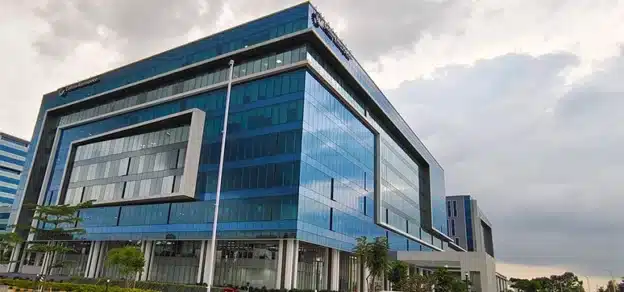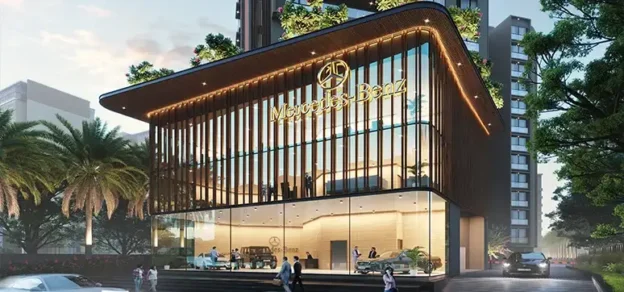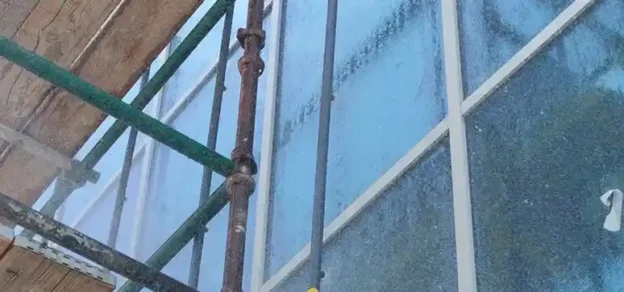Abstract
Structural analysis of laminated glass has evolved significantly in recent years. However, it still remains to be a debatable subject among most façade designers and structural engineers in India. With multiple analytical approaches prevalent in the market, there are various different options of glazing available for specific projects. The simple approach of adding up the thickness of glass layers and ignoring the interlayer thickness is commonly followed by engineers in India which often results in over engineered solutions. Finite Element technique based software packages, which can model the viscoelastic behavior of the interlayer in the laminates are more rational and thus are getting wide acceptance worldwide. They help in distinguishing the pre breakage structural performance of laminates made from different interlayers. Post breakage structural performance, which is very critical in frameless glazing applications like point fixed glazing and cantilevered glass balustrades, has been studied through impact tests at elevated temperatures.In glass fin applications, SentryGlas® interlayer sets a new horizon of design possibilities with thinner or slender glass construction.
Introduction
With the major push in construction sector aided by the fast track clearance of infrastructure projects, the demand for laminated glass is increasing manifolds. Today, glass has become an integral component of any modern building. In fact,it’s hard to imagine a building without glass in its façade owing to the broad spectrum of benefits it brings to the building architecture and performance. An architect’s imagination has always challenged a structural engineer by churning out innovative forms of the buildings.He often fantasizes about the glass elements without framework, soas to make them look more appealing, which probably has lead to the invention of “Frameless Glazing”. The architect’s fantasy is the structural engineer’s nightmareas for them glass tends to be an elusive material owing to its brittleness compared to steel and concrete.
Things become more complex when the glass is a laminated one as being a composite material;its properties are still not so well understood in the industry. Facade Engineers still follow the age old method of adding up the glass thicknesses and ignoring the interlayer thickness to arrive at the design thickness, as recommended by standards like ASTM E – 1300 and AS 1288.
However, it is now analytically possible to differentiate between the structural performances of laminates composed of different interlayers by using Finite Element Analysis as an alternative approach. Effective Thickness Methodhas now internationally accepted way for comparing pre and post breakage structural performance of laminated glass.
Laminated glass in India is increasingly finding its place in frameless applications like canopies and skylightsand thus in this paper, same has been chosen for comparing the pre and post breakage structural performances.
Frameless Glazing
Frameless glazing, as the name suggests, is one without any metal frame. Typical examples of frameless glazings are point / patch plate supported glass applications like canopies, skylights, Spider glazing, glass railings etc. In these applications, glass elements are held in place to sustain the imposed load without any structural framework running along the edges. Instead, the panels have metal patch plates or point fixings called rotules or spider fittings. These fittings transfer the forces from the panels to a structural member which may be a glass fin or tension rope/rod system.
In all these applications, the flexural behavior of the panel is different from the one in a framed glass panel as large stress concentrations are observed around the rotules fixings / patch plates ( Fig.4). For this reason, articulated bolt fixings are often used to allow the glass to move more freely and thus rule out any stress buildup resulting from seismic forces or building expansions and contractions. Tempered glass is a default choice of façade engineers for frameless glazing applications as it has the highest stress endurance limit thus taking care of the stress buildup around rotules. For overhead applications, tempered laminated glass is preferred for safety. However,in such applications there is a potential risk of glass fallout, termed as ‘blanket effect’ in case of tempered laminated glass with conventional PVB interlayer attributing to its poor stiffness
Evolution of SentryGlas
PVB interlayer was invented by DuPont for the automotive industry, which required an elastomeric-compliant interlayer. But it started finding its place in the architectural industry as there was no alternative. Then as innovation drives great inventions, there was a need to redesign an interlayer for the architectural industry, improving its post-breakage performance, enhanced impact resistance, better strength and lesser deflection. DuPont scientists came up with Ionoplast interlayer which is 100 times stiffer even at elevated temperatures and thus gives far better post-breakage integrity to the glass panel.
To corroborate the above said properties of SentryGlas, a comparison of pre and post-breakage structural performance of laminated glass made from conventional PVB and another made from Ionoplast – SentryGlas® interlayer for a point-supported glass in a canopy application has been made set against a backdrop of the controlled panel (table. 1)
Pre Breakage Structural Behavior
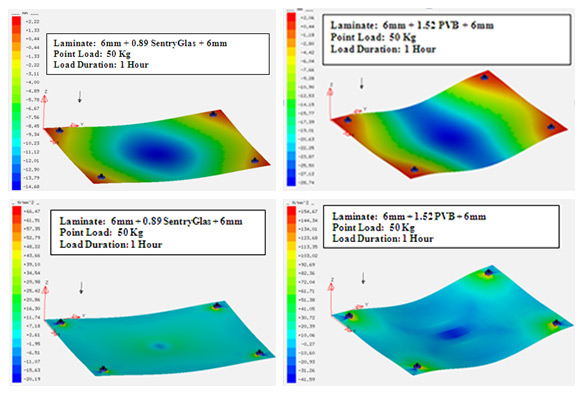
gives a comparison of structural performance results in terms of induced deflections and stress levels in a glass panel of size 1194 mm x 1500 mm subjected to a point load of 50 Kg for a duration of 1 hour. The analysis has been performed on the following types of samples.
- 6mm Tempered + 0.89 SentryGlas® + 6 mm Tempered
- 6mm Tempered + 1.52 PVB + 6mm Tempered
- 12 mm Monolithic Tempered Glass ( Control Sample)
A control sample of 12 mm monolithic tempered glass panel was analyzed to compare the extent of coupling provided by the interlayers. Fig 8 (a & b) gives the contours for deflection and stresses in the panel for the same load and boundary conditions.
| Glass Construction | Stress | Deflection |
|---|---|---|
| 6mm Tempered+ 0.89 SentryGlas® + 6mm Tempered | 66.47 MPa | 14.68mm |
| 6mm Tempered+ 1.52 PVB + 6mm Tempered | 154.67 MPa | 28.74 mm |
| 12 mm Monolithic Tempered | 64.62 MPa | 14.93 mm |
The above results conclude that even at an elevated temperature range of 50ºC, SentryGlas® interlayer provides an efficient coupling between the glass layers to match its structural performance with an equivalent monolithic glass as in the case of conventional PVB interlayer, owing to inefficient coupling, laminated glass lags behind in structural performance.
Post-Breakage Structural Performance
Laminated Glass is expected to not only sustain the imposed load on it till its life span but it should also have sufficient residual structural strength for a sufficient duration of time.
Research programs on the breakage behaviour of laminated glass, taken up by DuPont’s scientists backed by impact test studies have shown that conventional PVB is not the right choice for the frameless glazing applications like railings, canopies owing to its poor inherent strength at elevated temperatures.
Impact tests were conducted by dropping a soft bag weighing 100 lbs (45 Kgs) from a height of 1.2 mts at a test temperature of 50ºC. The test method simulates potential loading from installation and /or maintenance workers in distress. The tests have concluded that SentryGlas® laminates have an overall superior post-breakage performance over conventional PVB, EVA and stiff PVB laminated glass as these interlayers fail to provide a barrier against fall through after breakage.
Similar tests to assess the post-breakage performance in free standing glass railings were also done for 4 types of glass panels as depicted in Figures 10 ( a,b,c&d). SentryGlas® laminate in Fig: 10d shows the broken laminated glass standing in its original position because of the high stiffness of SentryGlas®, ensuring no compromise where human safety is concerned.
Glass Fin Applications
Glass fins find their application in spider-glazed facades for providing a lateral restraint to the façade against wind forces. Fins are designed by engineers using the buckling approach recommended by Standards like AS 1288 – 2006. The analytical equations given by this standard are only for a monolithic glass fin. It does not talk about laminated glass fins.
Dr. Luible in his research paper has tried to resolve this issue. He performed buckling tests on a variety of glass beams to establish a relationship between interlayer properties and the buckling capacity of a laminated glass fin. He has proposed analytical equations which represent the buckling capacity of the glass fins as a function of interlayer shear modulus.
Based on the same equations for a glass fin which spans 6.0 Mts, subjected to a line load of 2.4 KN/m and simply supported at both ends, a comparison of the lateral torsional buckling capacity is made for three types of glass constructions as shown in the table below.
Based on the results summarized in above table, it can be concluded that SentryGlas® laminated glass fins have buckling moment capacity that is twice of that for PVB laminated glass. This allows the designer a design freedom to either reduce the fin depth or fin thickness. Alternatively, the designer can design the fins for sustaining higher loads by increasing the fin spacing.
Higher Edge Stability
In marine climatic conditions, edge stability of a laminated glass is always a concern for the façade consultant. Salt Spray Test is most commonly used to test the durability of coated metal framings for 3000 hours duration as per ASTM B 117.3945. Although there is no direct correlation, the laminated glass is also expected to withstand this aggressive test.
Realizing this industry need, DuPont in collaboration with BES Consultants, Mumbai decided to conduct this test on SentryGlas® laminates inTÜV lab at PSB Singapore. The test aims at setting the performance limits of SentryGlas® laminates in comparison to PVB laminates. Five samples each of SentryGlas® and PVB were prepared with at-least two natural edges under lab conditions in Mechlen, Belgium. The test is still in progress with four out of five samples undergoing this test whereas one sample from each type has been kept as reference. It was decided to do interval based visual assessment, at every 500 hours, for any fogginess or delamination at the edges of the exposed laminates. The test has completed more than 1000 Hours duration so far.At this stage all the 4 samples of PVB laminate have shown signs of cloudiness at the edges, whereas SentryGlas® laminate is absolutely clear thus demonstrating superior edge stability for coastal and marine climatic conditions like Mumbai.
In order to further corroborate the superiority of SentryGlas over conventional PVB, the following case studies were carried out:
Case Study 1: Cantilevered Glass Partitions at T3 Terminal of IGI Airport, New Delhi
Fig 14: The Free Standing Glass Partitions with SentryGlas® at IGI Airport, NewDelhi
Introduction:The airport is spread over an area of 4 Sq.Km and of 80 % its surface area is comprised of glass in the form of external curtain walls, internal glass partitions, railings etc. The architects intended to have an absolute clear vision in the 2.6 Mts high internal cantilevered glass partitions for the boarding gates at the departure level of international and domestic piers.
Challenge:The vertical and horizontal edges of the glass panels were intended to be completely unsupported and free of any kind clutter of metal fixtures to provide a seamless glazing.
How the Conventional Interlayer PVB was just not enough?
The team of structural engineers and façade engineers wanted to restrict the deflection to be as low as possible for the given design wind pressure of 0.5 KPa. They wanted to restrict the deflections below 30 mm as per the codal requirements set by AS 1288 – 2006 for balustrades. The conventional interlayer was just not enough to mitigate the high deflections of 40 mm induced from the design wind pressure. Increasing the glass thickness from 12mm to 15mm was the other uneconomical alternative as 15mm glass is not manufactured in India, thus is heavily priced. The post breakage performance of the free standing glass panels with the conventional interlayer was also a big question mark as broken panels would have fallen like a heavy piece of cloth and become a potential danger to moving passengers in the vicinity.
How SentryGlas® Became the Choice?
DuPont identified the requirement of eliminating the clutter of metal fixtures which are often required to support glass partitions. DuPont’s SentryGlas® became the unanimous choice of the architects and engineers pertaining to its 100 times higher stiffness as compared to traditional PVB, which helped in reducing not only the lateral deflections by 28 % but also 31 % reduction in the cost of glass by reducing the thickness from 15mm to 12 mm. (table 3)
Comparison with Conventional PVB
| Laminate Construction | Pressure | Deflection | Maximum Principal Stress | % Savings in Cost |
|---|---|---|---|---|
| 12 mm + 1.52 PVB +12 mm | 0.5 KPa | 40.7 mm | 23.8 MPa | ———- |
| 15 mm + 1.52 PVB +15 mm | 0.5 KPa | 23.2 mm | 16.2 MPa | ———– |
| 12 mm + 1.52 SentryGlas® +12 mm | 0.5 KPa | 29.1 mm | 18.2 MPa | 31 % |
Design Detail
The cantilevered glass partition has panels 2.6 Mts in Height and 1.5 Mts in width. Laminated glass construction with 12 mm Tempered| 1.52 SentryGlas® | 12 mm Tempered has been used. The glass panels are just supported at the bottom edge in a 8mm thick and 475 mm deep Stainless Steel U channel. The channel was grouted 125 mm into the concrete slab and anchored to the mother RCC slab underneath. The vertical and horizontal edges of the glass panels are completely unsupported and free of any kind of metal fixture giving it a seamless look.
Case Study 2: The Glass Railings in Raheja Vivarea
Fig: 15 (a & b) Raheja Vivarea Residential Towers, Mumbai
Mumbai-based developer K Raheja Corp. have come up with a sprawling 8 acres of premium residential development called Raheja Vivarea near the Mahalaxmi area in Mumbai. The project has 3 towers each having 41 floors making it an iconic landmark in Mumbai’s skyline. The architects intended to have glass railings in the balconies of each luxurious condominium with minimum structural members so that the occupants can have a clear stunning view of Mahalaxmi Race Course, The Golf course and the Arabian Sea from their balconies. SentryGlas® became the obvious choice as it gave them the design freedom of keeping the edges exposed to the environment which could not have been possible had they used PVB interlayer. Below glass constructions were adopted considering gradations in wind pressures along the building height, the maximum being 2.0 KPa at the 40th floor.
- 0-10th Floor 6 mm Tempered + 0.89 SentryGlas® + 6 mm Tempered
- 11-20th Floor 6 mm Tempered + 0.89 SentryGlas® + 8 mm Tempered
- 21-30th Floor 6 mm Tempered + 1.52 SentryGlas® + 6 mm Tempered
- 31-40th Floor 6 mm Tempered + 1.52 SentryGlas® + 8 mm Tempered
A typical glass panel is 1235 mm in height and has a width ranging from 1530 to 2300 mm, supported only at the bottom edge, and also supporting a handrail at its upper edge. Around 10,000sq.Mtsof SentryGlas® interlayer was supplied by DuPont to Sejal Glass Ltd. who supplied the glass to the installer Durall Systems in this project.
Fig: 16(a & b) Cantilevered Railings with SentryGlas® in Balconies for Raheja Vivarea Residential Towers, Mumbai
References
- Van Duser, A., Jagota, A., Bennison, S. J., “Analysis of Glass/Polyvinyl Butyral (Butacite®) Laminates Subjected to Uniform Pressure” Journal of Engineering Mechanics, ASCE, 125[4], 435-42 (1999).
- S. J. Bennison, C. A. Smith, A. Van Duser, & A. Jagota, “Structural Performance of Laminated Safety Glass Made with “Stiff” Interlayers”, Proceedings of Glass Processing Days 2001, Tampere, Finland June 2001.
- Dr. Andreas Luible, “Lateral Torsional Buckling”, Chapter 5, Structural Engineering Documents 10, Structural Use of Glass, Published by International Association of Bridge and Structural Engineering.
